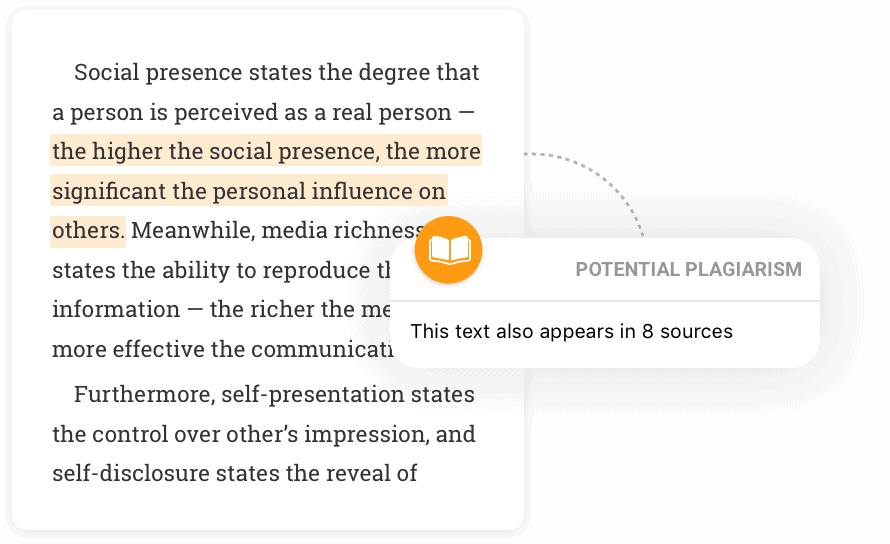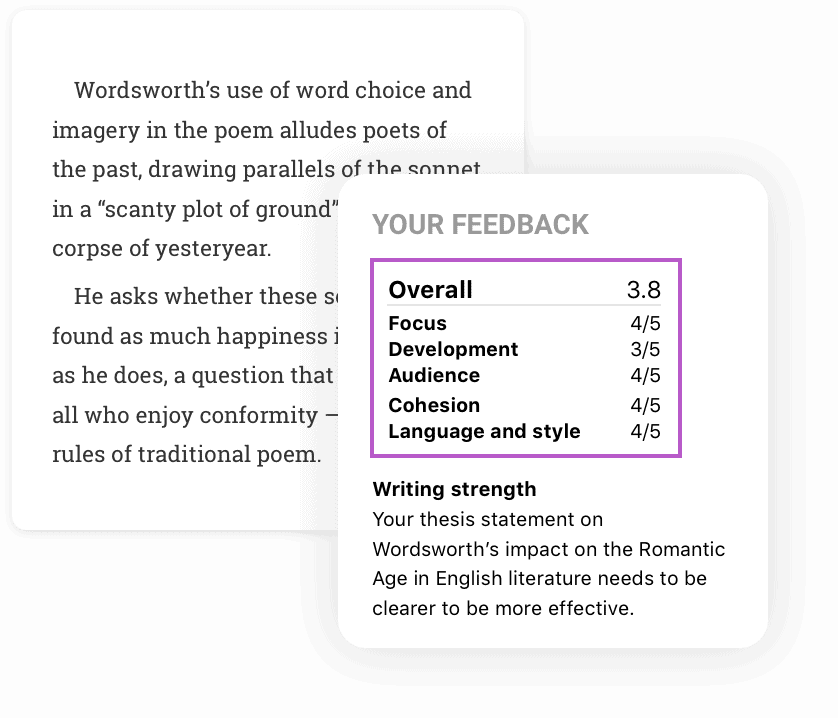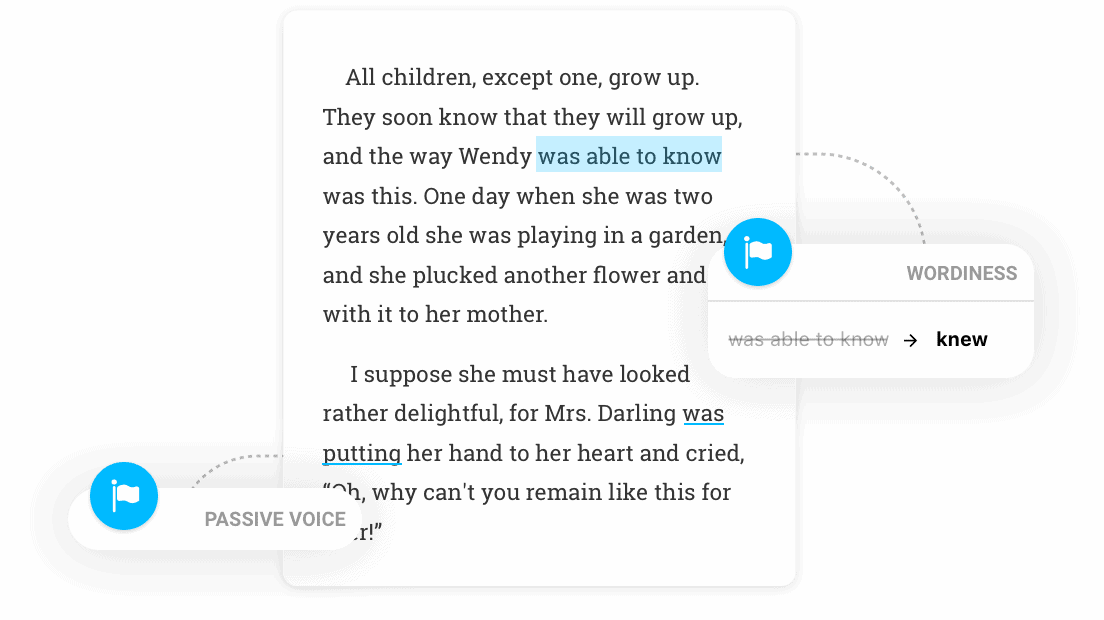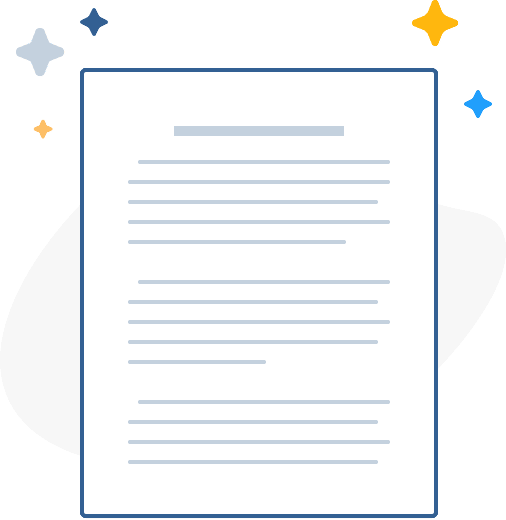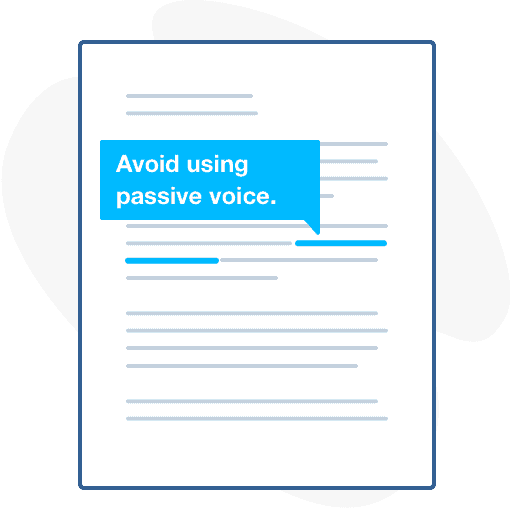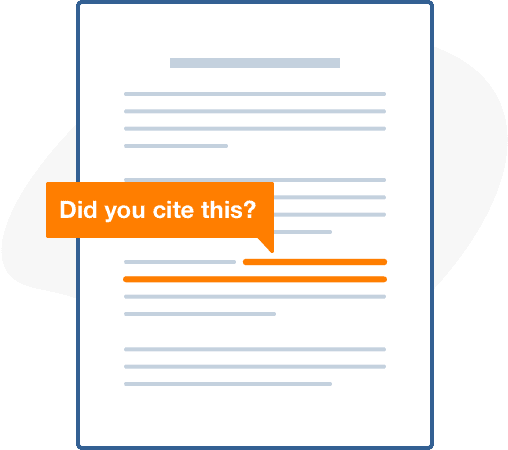What is Plagiarism?
Committing academic dishonesty could lead to failing grades and even expulsion Knowing the potential consequences of plagiarism certainly makes it clear why you should avoid it. However, without a concrete definition, abstaining from it can prove challenging.
If you’re wondering, “What does plagiarism mean?” an easy to remember plagiarism definition is that it’s the act of using someone else’s work or ideas without giving them proper credit. It’s important to note that this definition is not bound by intention, and students may commit it both knowingly and unknowingly in a research paper.
Learning to define plagiarism is just the first step in developing the awareness necessary to avoid it. Identifying it in its various forms is the crucial next step, combined with consistently utilizing a subscription-based or free online plagiarism checker as a non-negotiable element of your paper-writing process.
Is your paper in need of a plagiarism check? The BibMe Plus grammar check and plagiarism tool has got you covered! It’s designed to help spot those pesky places in your paper that may get red marks from your teacher, and it couldn’t be easier to use. Simply upload or paste your paper into the online plagiarism checker and, in no time at all, you’ll receive your results and can review any areas of concern. Try it now!
Not ready to check for plagiarism yet? Not to worry–the BibMe Plus plagiarism tool is available 24/7, so you can research, write, and revise when it’s best for your schedule.
Examples of Plagiarism
While it’s critical to understand the plagiarism definition as it’s broadly defined, it’s just as vital to learn the various ways it can occur if proactively preventing plagiarism is your goal.
Direct Plagiarism:
Direct plagiarism is the deliberate act of copying another individual’s work or idea into an assignment without providing any type of acknowledgment. An example of this would be a student copying and pasting text from a source into their project, without using quotation marks or any kind of attribution.
Incremental Plagiarism:
Copying bits and pieces from a single sentence and adding them into a project without attribution is a form of literary theft called incremental plagiarism. Just as with direct plagiarism, the incremental form attempts to disguise when a student or writer is taking credit for words and ideas that are not their own.
Patchwriting:
When a writer rephrases another author’s words (and it remains similar to the original words) and includes them without attribution in their work, it is known as patchwriting or mosaic writing.
How does it happen? Perhaps the writer rearranged words in the sentence, subbed out a few adjectives with synonyms, or used bits and pieces of the original wording and mixed it with their own. No matter the method, the original wording is often easy to spot as it peeks through its patchwork disguise.
Self-Plagiarism:
Plagiarizing another author’s words or ideas is an issue that most students recognize as wrong, but many are shocked to learn that reusing their own words can also fit the plagiarism definition. After all, they ask, how can I steal from myself?
Self-plagiarism is less about stealing and more about deceiving. When a student refurbishes or reuses work they completed in the past and turns it in a second time instead of completing new, original work, they are not honest with their teacher. Even reusing portions or paragraphs of your previous work without disclosing it is dishonest.
Do you have a paper you want to evaluate so you can confirm you’ve completed your research responsibly without plagiarizing (by accident)? A quick scan with the BibMe Plus plagiarism tool will help highlight phrases, sentences, or paragraphs in your paper that are found elsewhere on the internet. Each highlighted section has a prompt that will also ask you if you need a reference for it. Even better? If you review the source and determine that you need to add a citation, the plagiarism check tool will guide you through the steps of creating and inserting your reference. Pretty awesome, right? We think so too.
Lesser-Known Examples of Plagiarism
There are quite a few acts of intentional or unintentional dishonesty that students are surprised to learn also meet the definition of plagiarism.
Misleading Citations:
Including misleading citations is a form of academic dishonesty that is just as serious as direct infringement.
To understand how this fits into the plagiarize definition, consider the final result. If this type of plagiarism is undetected, the writer has deceived their audience and created a false belief about the words and ideas in the source material and its author. Whether it occurs intentionally or unintentionally, misleading citations draw a false link between an idea and a source and harm a student’s credibility.
Invented Sources:
While misleading references can occur as a result of not understanding your research, invented sources are more often the result of insufficient research or intentional deception. A student who can’t find a source to back up a point they want to make or who doesn’t want to commit the necessary time to ethically complete a paper might resort to including one or more invented sources in their bibliography. Whatever the cause, an invented source creates an illusion of credibility by tying an idea to a source that doesn’t exist.
An invented source can also be the result of poor note-taking. Perhaps you found the perfect quote to include in your introduction but forgot to write down the source. You know it’s wrong to plagiarize, but unless you invent a source you’ll have to remove the quote, right?
Wrong! Rather than choosing between removing the quote or inventing a reference, let the BibMe Plus plagiarism tool free up some time by helping you find the source and create an accurate citation. It’s quick and easy to scan your paper for plagiarism and, most importantly, it’s the ethical thing to do.
What Is Not Plagiarism
With the definition of plagiarism covering so much ground, it’s easy to raise the alarms and wonder if even the most innocent of acts might be construed as plagiarizing. Our advice? Don’t panic. Instead, sit back, relax, and check out these times when you can write your heart out, worry-free:
Common Knowledge:
Information that is widely known and accepted as fact is considered common knowledge. This can either be information that is known to most people in the world, in your country, in your state, or even just in your field of study, depending on the audience for your work. For example:
J.K. Rowling wrote the Harry Potter series.
This is a fact that is known widely enough that it is considered common knowledge and does not require a citation.
If your statement is considered common knowledge, you can include it in your paper without creating a citation. Keep in mind, though, that research papers showcase new ideas and analysis. Common knowledge is acceptable to include, but make sure you mix in information from outside sources as well.
Attributed Quote or Idea:
To include the ideas of others in your papers, you need only to attribute them to the original author to ensure you safely stay on the side of academic integrity. A proper paraphrase or direct quote with a citation is an excellent way to promote a point in your paper, while also demonstrating that you fully understand the author’s idea and have completed your research responsibly.
While most writers remember to add references for direct quotes, they can sometimes forget to include references when adding paraphrases into papers. A free plagiarism site may only help these writers pinpoint passages, but the BibMe Plus tool also helps you develop accurate references, in Chicago citation style and many others, in all types of situations. Quotes, paraphrases, full references: you name it, our plagiarism checker does it, and does it well.
Now that we’ve learned what is and isn’t plagiarism, let’s look at how to avoid it entirely.
How to Avoid Plagiarism
When you first learn to define plagiarism and realize how expansive the definition is, it can be intimidating to think about all the information you have to cite. That’s where the BibMe Plus online plagiarism tool comes in by helping to spot intentional and accidental plagiarism and flagging any matching text for your review.
When you use the plagiarism tool, or any of our resources, your paper always stays in your control. You’ll be given the potential source for each flagged passage so you can review it and decide whether to create a citation or dismiss the alert.
If you find that you need to add a citation, we’ve got your back. There are BibMe citing tools that can help guide you through the process of creating and styling a citation for your paper.
No matter what tools you use to help complete your work ethically, whether they’re free plagiarism tools or not, you are ultimately responsible for the work that you turn in. Remember, the best time to find errors or unintentional infringement is BEFORE you turn in your paper, not after. When in doubt, run a BibMe Plus plagiarism check to help you find any passages that you may have missed on your own, and use the free tools to create and insert your citations in more styles than even imaginable.
Spot Writing Mistakes
Unintentionally plagiarizing isn’t the only thing to worry about when writing and revising a paper—you also don’t want to lose points for small grammatical mistakes. Luckily, the BibMe Plus grammar checker and plagiarism tool will complete a spell check and review your document for style, punctuation, sentence structure, verb tense, pronoun-antecedent agreement, and more!
The BibMe Plus grammar check tool gives you more depth and insight than a standard spell checker. When you scan your paper, the proofreader highlights areas for your review and provides prompts to help you make an educated decision about how to proceed before accepting or ignoring each suggestion. And, since our grammar and spelling check gives definitions and explanations, it can help you improve your writing over time.
This service is for all writers, from those who have complete confidence in their writing ability to those who are just starting to write. No matter what your writing level, let the BibMe Plus grammar and plagiarism checker free up your time with a quick and thorough review that leaves no noun, determiner, or conjunction unchecked! Upload your paper now and start improving your writing today.
